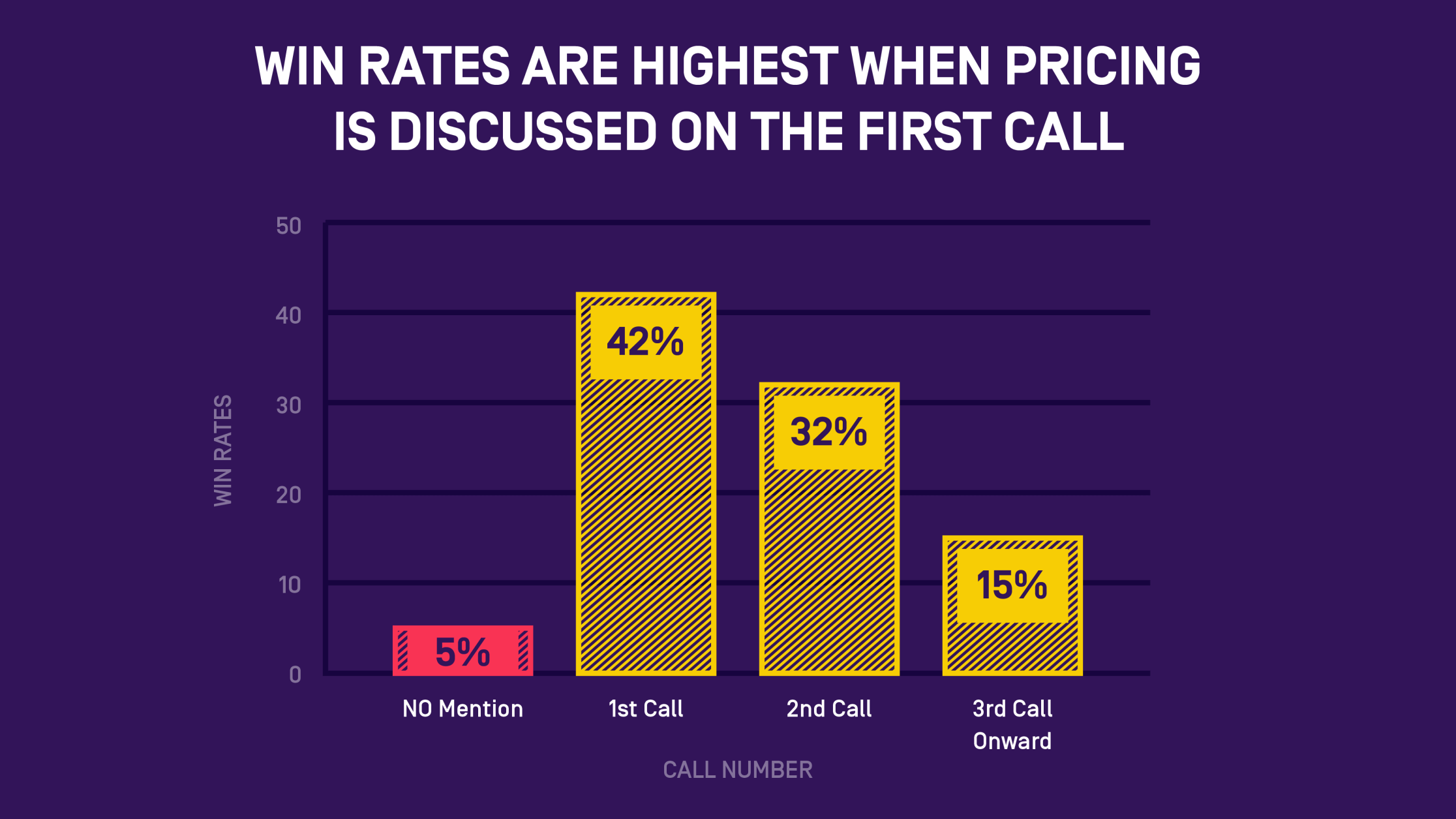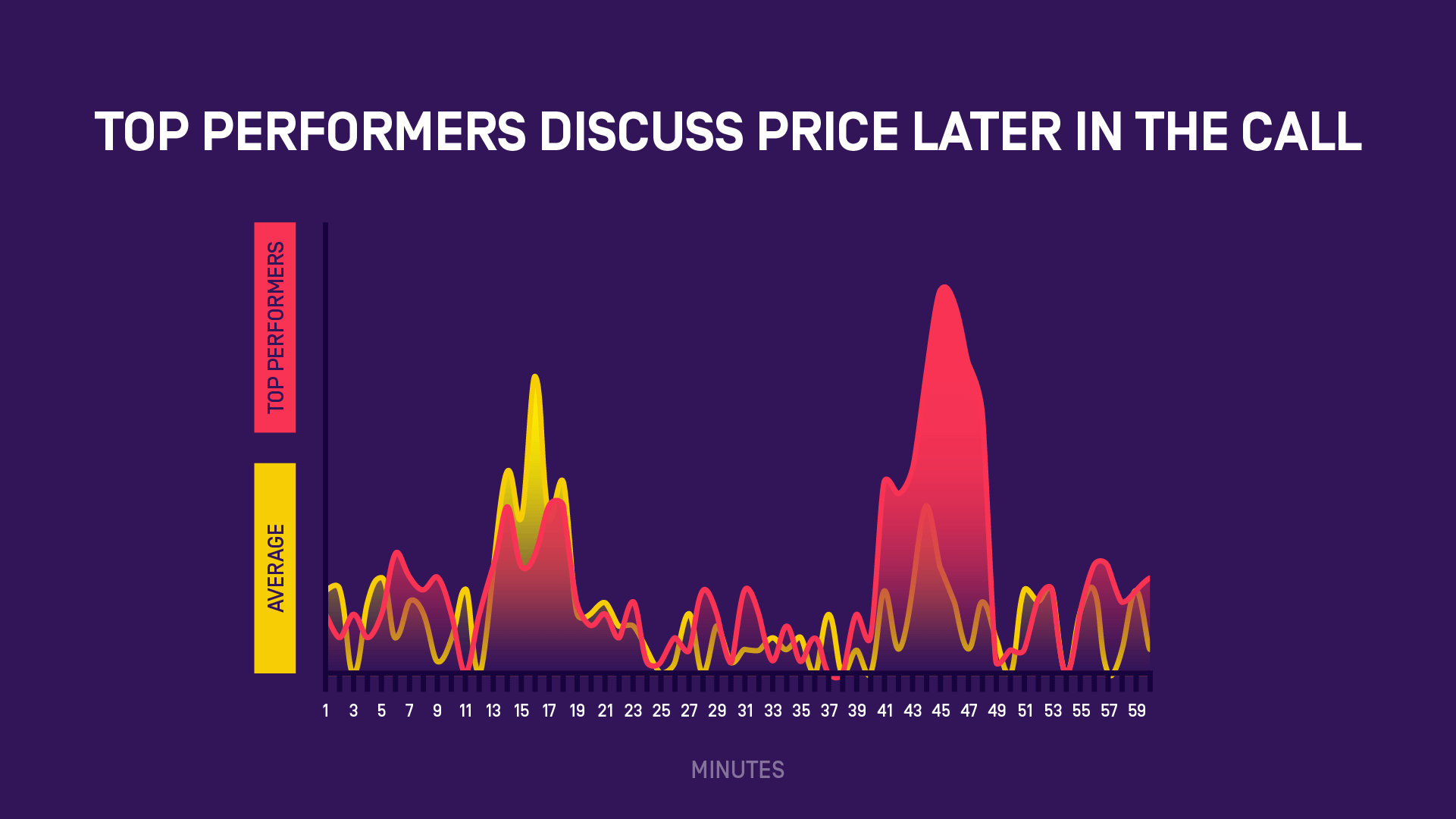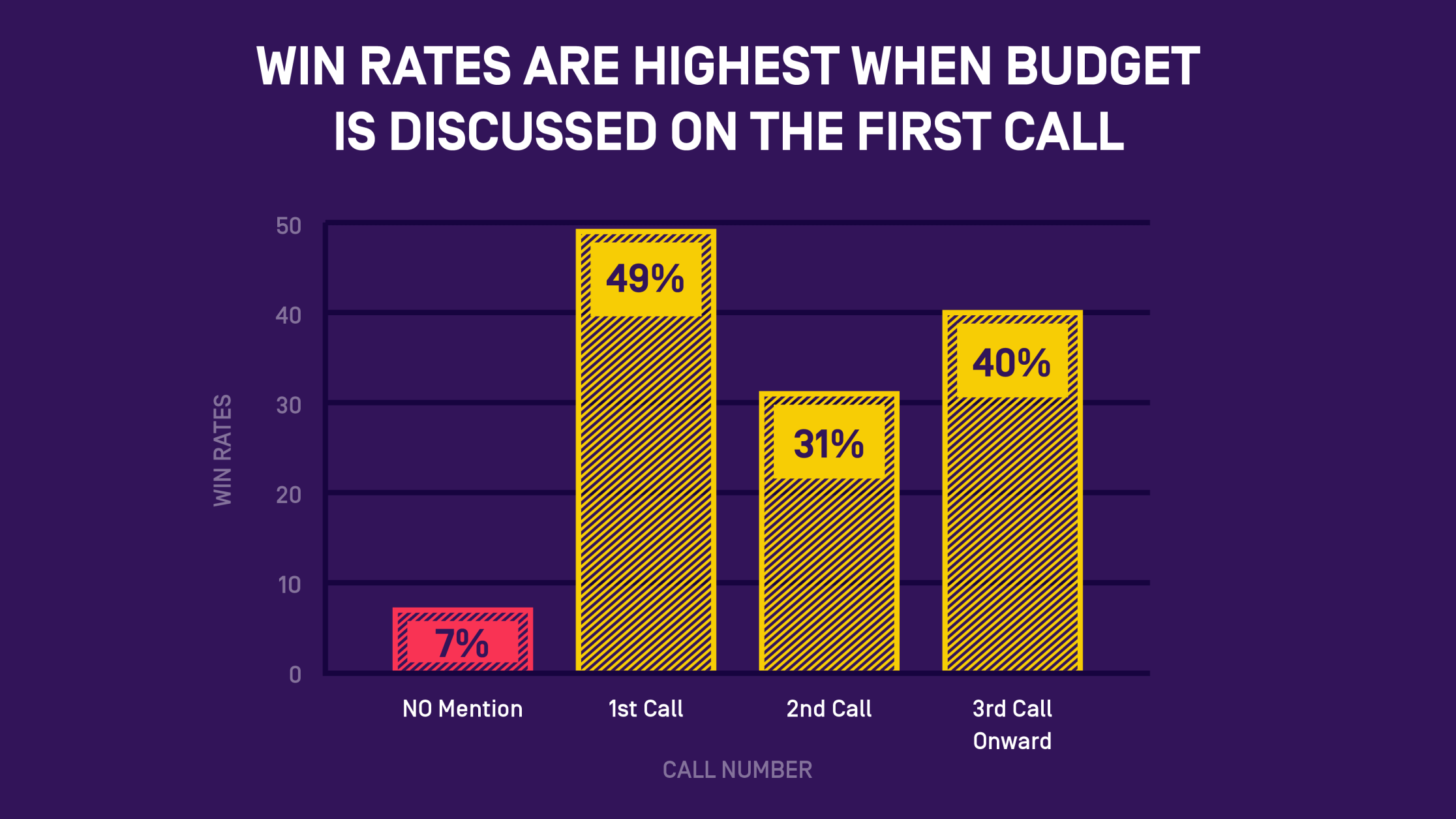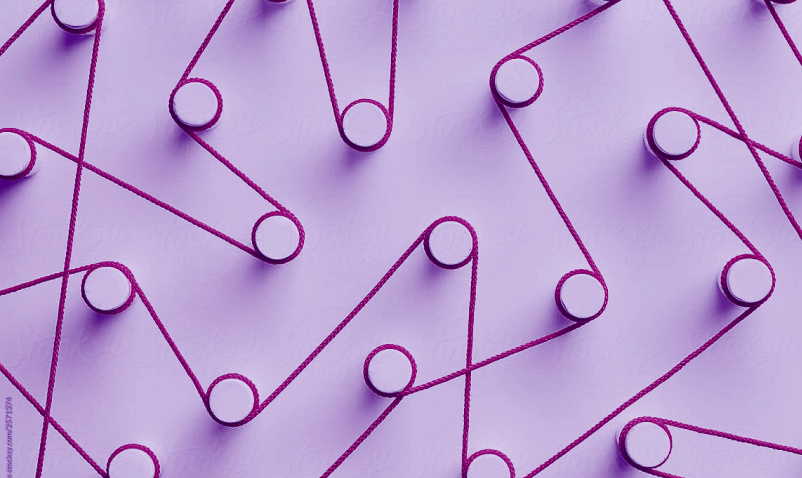When to discuss price and budget according to data
This article is part of the Gong Labs series, where I publish findings from our data research team. We analyze sales conversations and deals using AI, then share the results to help you win more deals. Follow me to read upcoming research.
11:54 a.m.
I had six minutes until their “hard stop” at noon, and my discovery call would end.
The call had gone smoothly so far – their needs and timing definitely aligned for an in-quarter deal.
And it sounded like the department head was on board.
But we hadn’t gotten to pricing yet.
11:55 a.m.
I gotta’ save a couple minutes to lock in next steps before we wrap up.
Should I bring up pricing now, before we hop off?
I don’t even know if they have budget for this.
Unsure, I answered their final question and walked them through next steps.
We locked in a time for the next call, I sent the calendar invite, and closed the Zoom meeting.
I thought “I’ll bring it up next time,” and moved on with my day.
Not that big a deal, right?
That’s the million-dollar question: Should we discuss pricing on the first call, especially in today’s “COVID economy” when budgets are tighter than ever?
Some say Yes!
Others say Not so fast…
So we turned to data for the answer.
Read on if you want to know the best time to discuss price and budget.
Sidebar: About Gong Labs
Before we dive into some next-level number crunching, here’s a quick explanation of how we get our data at Gong Labs.
We analyze (anonymized) B2B sales interactions from our product users, including everything captured by Gong’s Revenue Intelligence platform: web conference meetings, phone calls, and emails. Then we analyze how seller and buyer actions impact success rates.
TL;DR: We cull through millions and millions of data points to generate powerful, actionable insights to help salespeople be more efficient and close more deals.
For this post, we analyzed 11,331 opportunities and looked at when pricing and budget are first discussed in a sales cycle and their relationship with win rates. To avoid bias, all the opportunities we analyzed included at least three calls.
And now, back to price and budget, budget and price.
(PS: Want to skip ahead? Here’s a cheat sheet with everything we know about successful pricing conversations).
Include price in your discovery calls
The data is clear.
Win rates are highest when pricing is discussed on the first call — 10% higher.
The data shows that the longer a sales rep waits to bring up pricing, the less chance they have of winning the deal.
Let’s take a moment to acknowledge something unspoken here: talking about pricing (and money) isn’t taboo. It’s just part of doing business. A big one, in fact.
It’s such a key component in buying and selling that it doesn’t matter whether the seller or the buyer brings it up first. The win rates stay the same no matter who raises the issue.
What does matter is WHEN it’s brought up.
And earlier is better.
Particularly in a COVID-world, buyers (and sellers) don’t have time or energy for ‘the dance’. Or maybe they’re tired of dancing.
Just get down to business and don’t be afraid to talk price on the first call.
That said…
Discuss price, but don’t lead with it
If you’re familiar with Gong Labs, you probably remember our previous report, which shows that top producers discuss price toward the end of their calls.
Star reps bring up price in the 38-46-minute window:
Build your value prop, then move to price.
Most reps bring up pricing too early in their calls. Mistake.
Or they spend the entire first call — and sometimes the second and (ugh!) third calls — building the value and putting off conversations about pricing.
Don’t wait until the second call.
Get into it about 3/4 into the first call.
And at this point in the article, you’re probably starting to wonder about budget. Because you can’t discuss pricing without talking budget, right?
They go together like…
Peanut butter and jelly.
Batman and Robin.
Gin and juice.
Beyoncé and Jay-Z.
OK, you get it. Budget’s important too.
You can’t spell BANT without budget
All sales reps know BANT: Budget, Authority, Need, Timing.
It’s how we decide whether an opportunity is real (aka qualified).
That first step — understanding the prospect’s budget and confirming that it’s in range with your price — is critical. If they don’t have the money to pay for your product or service, the “ANT” has to be really strong to make this deal worth pursuing. And you’ll have to find budget at some point, so make that part of your strategy and forecasting from the jump.
So you can probably guess what’s coming next, because it’s a lot like the data we saw for pricing.
Win rates are highest when you discuss budget during the first call:
In fact, discussing budget on the first call even prolongs relationships. It boosts the volume of buyer/seller interactions from two calls to four. And anything that keeps the connection going is a good thing.
Die-hard BANT-ers: Consider yourselves validated.
Sandler Training folks: You got it right. You’re welcome to an earned “Told you so!”
Now that you have the green light to talk greenbacks, here’s a bit on HOW you go about raising budget on the call.
Smart sales reps don’t pepper prospects with direct, check-the-box questions such as “What’s your budget?” or “Are you the decision maker?”
Instead, they infer BANT as they qualify, by building value while getting to know the prospect.
The effects are two-fold: they get the info they need to suss out BANT and the buyer feels heard.
You might be wondering what this means in the COVID-economy when budgets are low. Reeeal low.
There’s a silver lining for sales folks: Buyers are well aware of their budgets right now and don’t want to waste time. They know what they want and have less wiggle room than normal. They don’t want to spend time window shopping.
So don’t be afraid to get into the budget conversation on the very first call. Don’t dance around it. Be confident. Own it.
(Need a budget talk track? Check out this how-to on securing budget in 2020.)
Your pipeline’s secret weapon: 7 data-backed tips
Sales is nuanced. It’s all about the subtleties of when and how. Most people don’t know how to execute on those properly.
That’s why we put 7 data-backed tips for perfect pricing calls in a free Pricing Cheat Sheet.
It’ll help you nail the when, how, and why of pricing so you can turn conversations into closed-won revenue.
PS: Want to add these insights to your Gong account? Here’s a how-to tutorial.








